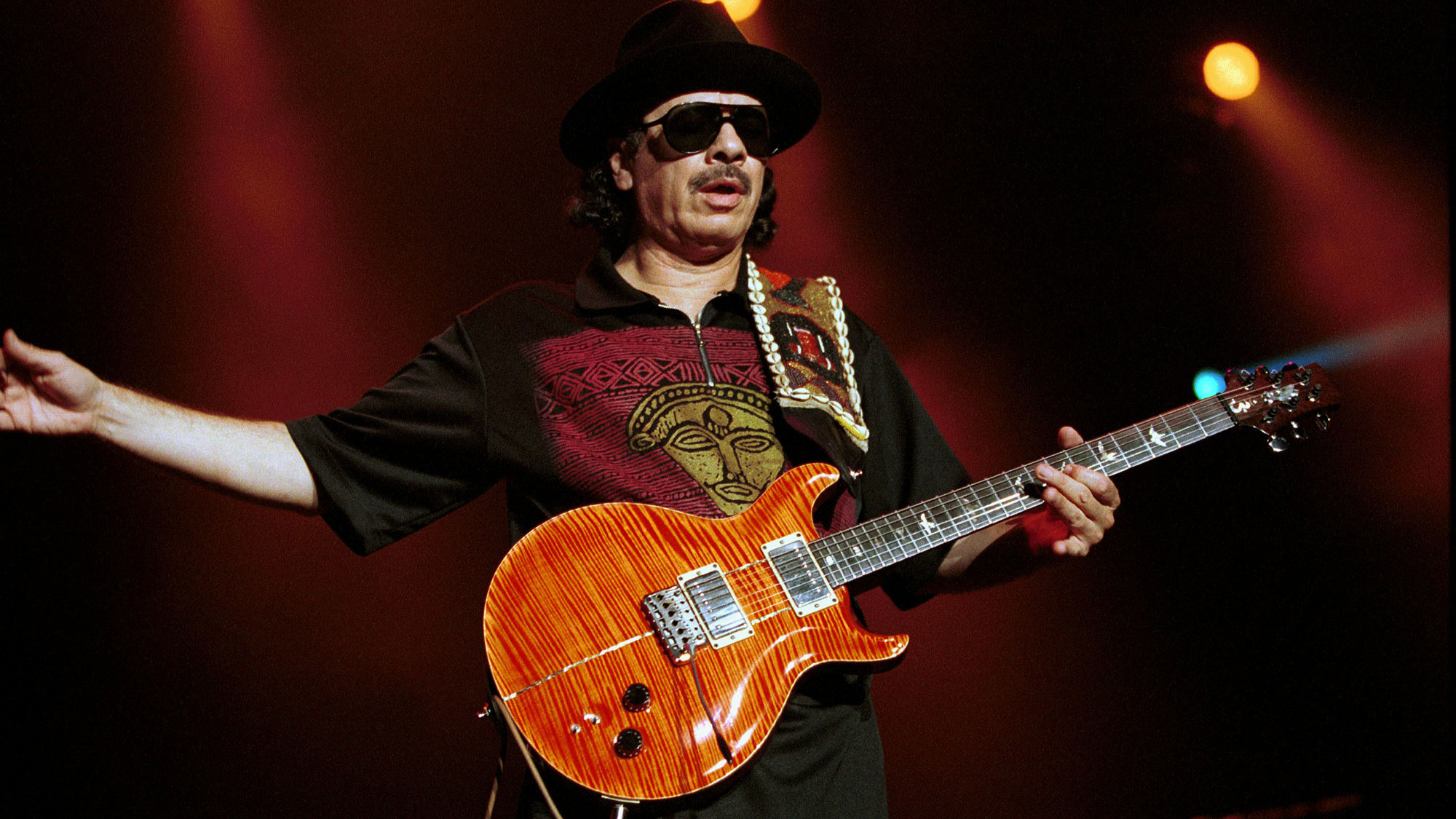
There are a number of different minor scales available, suiting different situations and chord progressions. Two of the most common used by guitarists are the minor pentatonic (1-b3-4-5-b7) and natural minor scale (1-2-b3-4-5-b6-b7), also known as Aeolian mode. There are other scales, such as the Dorian mode (1-2-b3-4-5-6-b7), but the minor pentatonic and natural minor are the ones we usually learn first.
By contrast, the harmonic minor has a unique sound to it, which makes it rather appealing to the ears. The reason for this is that it features a major 7th interval (1-2-b3-4-5-b6-7), making it one note different from the natural minor scale.
While the natural minor and other major scale modes are built on tone and semitone intervals, the distance between the b6 and 7th degrees of the harmonic minor is a minor 3rd, which provides its unique sound.
When playing over a static minor triad, any of the minor scales listed above will work fine, each one bringing its own unique colour. However, the harmonic minor is better for playing over a perfect cadence, where chord V7 resolves to a minor chord, as with E7-Am.
The reason for this is because the E7 features a G# note, the Major 7th in the key of A minor. Our A minor pentatonic and A natural minor scales by contrast feature a b7th interval, or G natural. So the Harmonic Minor’s G# sits perfectly over the E7 chord, outlining its major 3rd.
What’s more, this G# also works as a leading note, since it resolves perfectly up a semitone to the root of the A minor chord.
These minor perfect cadences exist in lots of contemporary songs, such as Santana’s Smooth, The Eagles’ Hotel California, and November Rain by Guns N’ Roses. The harmonic minor scale is also commonplace in classical, Latin and jazz compositions due to this ability to work over the minor perfect cadence. So, as you can see it’s a great scale with which to outline chords and provide the correct melodic and harmonic content.
The following examples and study piece show how the harmonic minor scale can be employed over a bluesy Am-E7 -Am progression. The study piece itself features an additional Bm7b5 chord for some slight variance, which creates the minor II-V-I chord progression, which is so prevalent in the musical genres mentioned above.
I would urge you to explore the harmonic minor scale across the entire guitar neck using the CAGED system. The good news is that, if you are confident with using the natural minor scale, a great way of looking at the harmonic minor is to simply raise the natural minor’s b7th to the harmonic minor’s natural 7th. Good luck!
Examples 1-5
Example 1
This first example outlines a classic shape of the A harmonic minor scale in the fifth position. Notice how the G# note lands on the first beat of the second bar to outline the major 3rd of the E7 chord, as both Joe Walsh and Don Felder do in Hotel California’s solo.
Example 2
This single-string lick employs an E major triad in the second bar before ending on a C note in the final bar, which is the minor 3rd of the A minor chord.
Example 3
The legato lines and triplet phrase in the second bar give a Spanish guitar style feel to the lick. The harmonic minor scale is perfect for this style of playing.
Example 4
A Santana-inspired phrase forms the basis of this example. The major 3rd (G#) outlines the E7 chord, while a semitone bend at the end resolves the phrase.
Example 5
Our final example shows the harmonic minor at work in an Yngwie Malmsteen-style neoclassical rock lick. I opted for alternate picking to play this example, although you may prefer to use economy picking.
Study Piece
[Bars 1-8] We begin by focusing our attention on the fifth position of the harmonic minor scale. The G# note is utilised to highlight each of the E7 chords’ major 3rds, which is where this scale really shows its purpose. An F note (the b5) is the target choice for the Bm7b5. All these note choices outline each of the chords.
[Bars 9-16] This is the same chord progression but this time moving up and down the neck. As with the previous eight bars, notice how chord tones are specifically used to outline the progression, this time mixing legato and picked notes.
The piece ends with a final run up the dusty end of the fretboard, before resolving to a final A note. In order to make it sound less exercise-like, our study piece features a series of scale and arpeggio runs mixed in with some sparse phrasing.
It may be worth isolating the more challenging runs, slowing them down until you are comfortable at playing the piece in its entirety.







